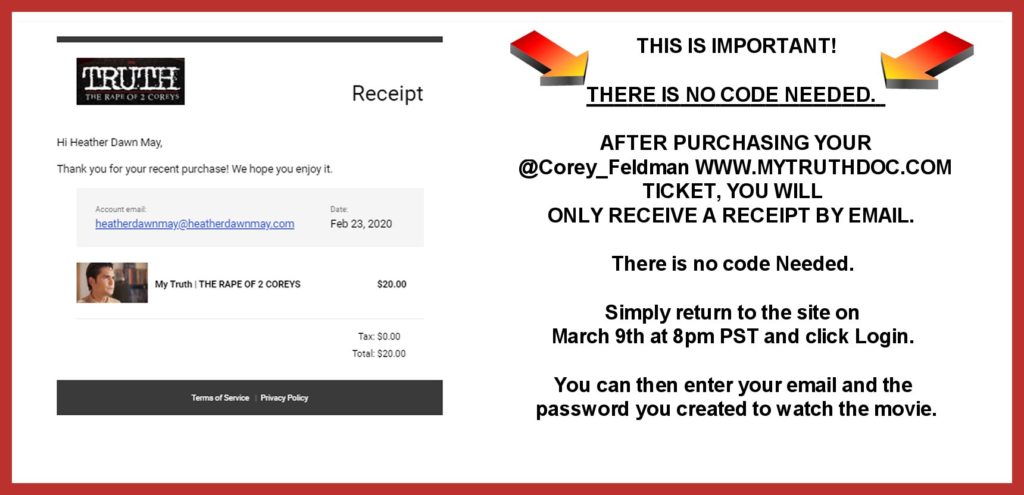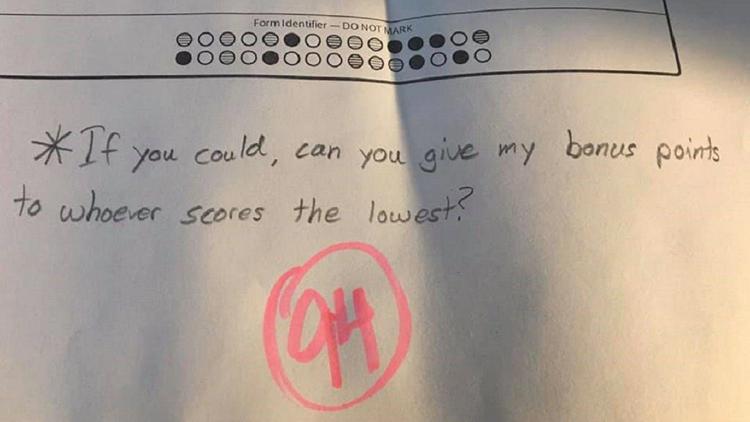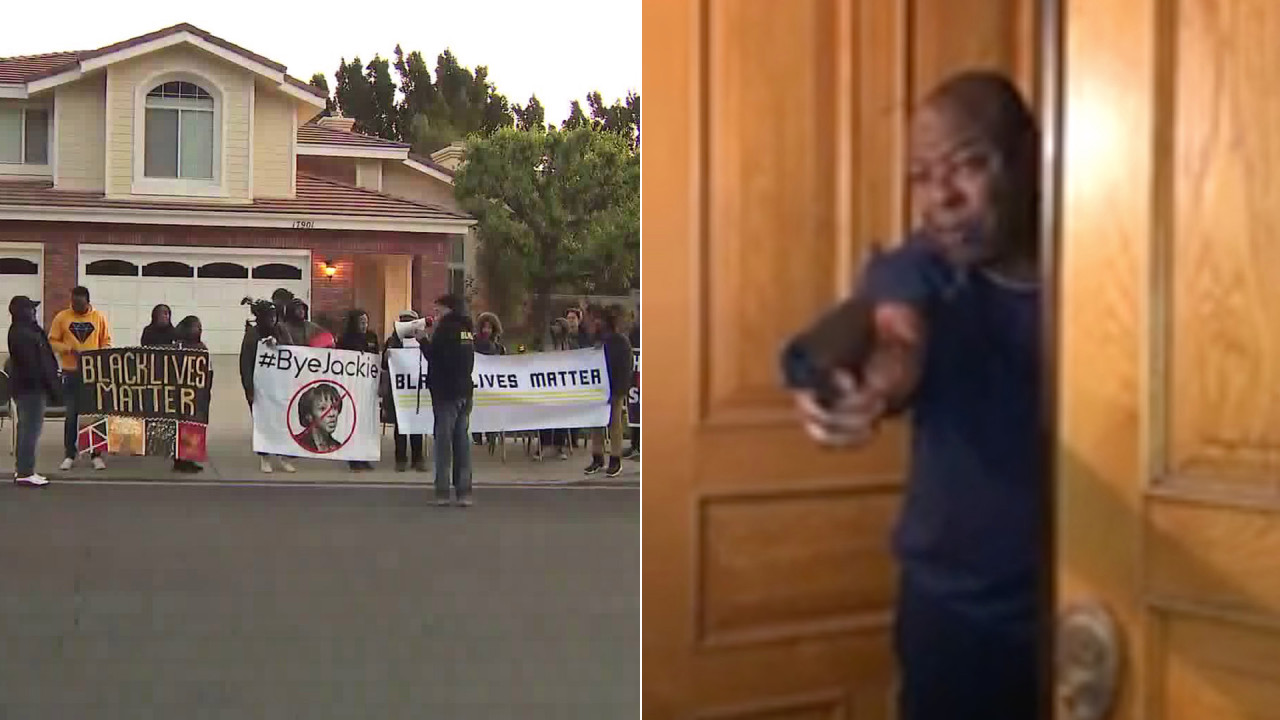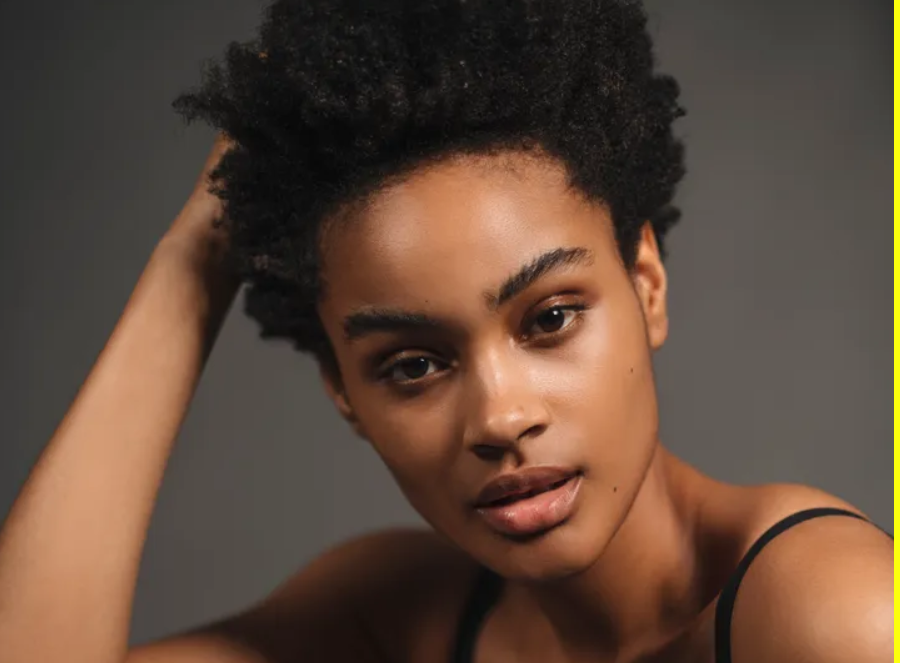Best friends in Philadelphia learn they are sisters after 17 years
HOLMES, Pennsylvania — “It was just God’s work, man,” said Kenneth Wimberly, who just learned he has another daughter.
This story takes us back 17 years to Sulzberger Middle School in Philadelphia. A 6th-grader, Ashley Thomas, would practice stylizing hair on her new best friend, Toya Wimberly.
Many said the pair from West Philly looked and acted like sisters. They grew up feeling that way, too.
Fifteen years ago, Ashley learned that her dad, Mike, was not her biological father. This never stopped Mike from being around and taking care of Ashley. Unfortunately, her mother passed away several years later.
Toya’s father, Kenneth, always joked that Ashley was his daughter, but it wasn’t until last week that he learned this was true.
It was a chain reaction that started on social media. Kenneth was pictured in photos of his daughter, Toya’s engagement party on Facebook.
Ashley’s late mother’s best friend recognized him as someone they used to hang out with. Kenneth remembered the women and started lining up the pieces.
This prompted the group to conduct a DNA test. Sure enough, Ashley, 31, and Toya, 29, are not-so-long-lost sisters. Both are the daughters of Kenneth Wimberly.
Although shocking, it is not a surprise given their similarities.
Both grew up having huge gaps in their front teeth and high cheekbones. Funnily enough, they both are currently wearing braces to fix the former.
They tout themselves as hustling entrepreneurs who both started their own businesses.
Toya owns a children’s transportation company, Global Rides Transportation, while Ashley created Hot Headz Hair Studio.
They recently planned a group trip to Miami, but ultimately they were the only two who carried out the vacation. This gave them an opportunity to deepen their bond further before even realizing they were related.
Both became pregnant at the same time and the fathers of their first children are brothers themselves. And now, they learn they have the same father.
The whole family is left to wonder, “why now?” after nearly two decades of successful friendships. There may not be any answers, but they know there is only room to become closer.
Photo Credit: 6abc.com
Straight-A student offers bonus points to classmate with lowest test score; helped turn a failing grade into a passing grade
(CNN) — An unusual request at the end of a student’s exam was quickly shared by thousands, thanks to a Kentucky teacher’s Facebook post.
Winston Lee, a teacher at Letcher County Central High School, was picking up exams about World War II in his 11th-grade history class when he noticed an asterisk with a small note toward the bottom of one exam.
It read, “If you could, can you give my bonus points to whoever scores the lowest?”
Lee said he was “taken aback” by his student’s request, especially when most are clinging to every extra point they can get to boost their grades.
“He wanted to give up what he had earned so blindly,” said Lee. “I took it as a really compassionate, loving and kind act from a young person that most people would consider rare.”
The unexpected ask touched Lee so much that he posted it to his Facebook page on February 21 in hopes of inspiring others. The post quickly did just that, with thousands of shares and comments praising the student.
Lee explained how “one of my guys” received an extra five points on the exam after doing well in the previous day’s review game. The straight-A student ended up scoring a 94 on the exam, and the points he gave away allowed his classmate to go from a failing to passing grade.
Although his generosity received a lot of positive feedback, some questioned whether giving a student who didn’t pass the extra points was the right thing to do.
One commenter suggested “an offer to help the struggling student(s) to learn the material would be better.” Another wrote, “The grades reflect that they learned something when they didn’t.”
But Lee said he has no regrets, and people “overthought” what took place.
“I tried to not let any of the negative comments affect any of the positivity that was coming from it,” said Lee. “I just wanted to honor what this student had asked for and felt he earned his right to give his points away because it was such an amazing gesture.”
He said he hopes his student’s spontaneous act of kindness serves as an even greater lesson outside the classroom.
“Never in my teaching experience have I heard of a student willingly give away something they had earned to allow an extra opportunity for someone else,” said Lee. “So, the ultimate message is to take from his example and pay it forward.”
Photo Credit: kmov.com
L.A. County DA Jackie Lacey apologizes for husband pointing gun at Black Lives Matter demonstrators
Tensions between Los Angeles County District Attorney Jackie Lacey and Black Lives Matter heightened Monday after the prosecutor’s husband drew a gun and threatened to shoot an activist on the couple’s porch in Granada Hills.
About two dozen protesters had gathered outside the residence around 5 a.m. Monday, holding up Black Lives Matter signs and chanting their disapproval of Lacey on the eve of the March 3 primary, in which the two-term incumbent is facing two challengers.
One demonstrator shouted through a bullhorn. Another held a sign that read, “#ByeJackie.”
Just before 6 a.m., Melina Abdullah, one of the the most vocal Black Lives Matter organizers in Los Angeles, released video of Lacey’s husband David confronting her with a gun.
The footage opens with a man holding up a firearm at his door saying: “Get off of my porch, right now. Get off.”
A woman responds, “Good morning. Are you going to shoot me?”
The man replied: “I will shoot you. Get off of my porch. … Get off of my porch, right now. We’re calling the police, right now.”
He then shuts the door.
By around 7:40 a.m., Los Angeles Police Department officers were standing in front of Lacey’s home as protesters continued to shout, “Jackie Lacey must go.”
Later Monday morning, Lacey addressed the incident in a news conference at the Hall of Justice in downtown L.A.
Apparently distraught, she issued an apology, telling reporters that her husband responded in fear.
“And now that he realizes what happened, he wanted me to say to the protesters, the person that he showed the gun to, that he was sorry,” Lacey said. “That he’s profoundly sorry. That he meant no one any harm. That it was just him and I in that house and that we really didn’t know what was about to happen.”
She added, “I too am sorry if anybody was harmed. It was never my intent to harm any protester. I just want to live in peace and do my job.”
Activists have long criticized Lacey for her decision not to prosecute a number of high-profile, use-of-force cases involving law enforcement officers.
At Monday’s news conference, Lacey enumerated threats she said she’s received over the years. The protests ramped up in the time leading to Tuesday’s election, the DA said.
In an interview with KTLA, Abdullah said the activists went to her home early Monday “to catch her. We’ve been in front of her office demanding a meeting for 2 1/2 years.”
Lacey said they did not want to comply with her wish that a meeting be held one-on-one or in a small group setting.
“My hope is that one day that might change. …You can vote, that’s one way to speak your mind. But to publicly humiliate people, to say to them, ‘I hate you.’ That you’re a racist. What progress will we make in this world if that’s how we talk to one another?” Lacey said.
Soon after Lacey’s news conference, Black Lives Matter activists set up their own podium on the stairs outside the Hall of Justice.
Sherlyn Haynes held up a photo of her son Christopher Mitchell, who was fatally shot by Torrance police at a Ralph’s parking lot in December 2018.
Authorities said Mitchell, 23, had an air rifle and was driving a stolen car. The District Attorney’s Office found the two officers involved “acted lawfully in self-defense.”
Mitchell’s family said the officers did not need to shoot the 23-year-old.
“My son was murdered, officer still shot him with his hands up,” Haynes said on Monday.
She continued, “Jackie Lacey: You’re not doing your job. … I’m glad you didn’t kill none of our Black Live Matter people, like they murdered my son and the rest of our kids.”
Photo Credit: ktla.com
I’m A Black Model And This Is What My Hair Goes Through
Jade Williams shares her challenges of having natural hair in the modeling industry
Article via HuffingtonPost
Having natural hair as a Black woman in the modeling industry can help you stand out, but it also comes with challenges. Many hair stylists for photo shoots and runways aren’t trained to work with different hair textures — a dilemma that Jade Williams, a 24-year-old model with JAG Models, is all too familiar with.
Up until she was 18 years old, Williams had always chemically straightened, or relaxed, her hair. But then she decided enough was enough.
“I don’t feel defined by my hair, but it symbolizes me embracing my full self,” Williams said.
Williams spoke to HuffPost about how she embraced her natural hair, the struggles that arise in an industry that isn’t always welcoming of — or trained in — natural beauty, and why she continues to celebrate her look despite these issues.
You embrace your natural hair now, but was that always the case?
In the Black community (more so back in the day), we got our hair chemically straightened from a very young age. When I was 3 or 4 years old, my mother decided to have my hair chemically straightened because my hair was extremely coarse and thick. I would get my hair relaxed every six weeks. Imagine the money spent and damage that has on your scalp over the years! I had many hairstyles with my relaxed hair: razor bobs, blunt bangs, shaggy cuts. I’d been getting that done up until I was about 18 years old.
What was it like getting your hair chemically straightened for that many years?
I’ve experienced chemical reactions, burns and rashes from relaxers, and this is something that is common and a risk people take to have straighter, more manageable hair. This is something that was normalized in the Black community— not so much today, but when I was younger. All for straight hair. This is a direct tie to what we call assimilation in the Black community, where we try to adapt more European standards of beauty.
When did you decide to break from that beauty standard?
I wanted to since I was a younger teen, but I was afraid it would take too much time to do (it takes more time to do natural hair as opposed to chemically straight hair). And I felt that society — or even kids — tease natural hair, especially hair textures like mine where it’s not really a loose curl, it’s a really tight, kinky curl.
Within the Black community, there are the terms “good hair” and “bad hair.” Good hair is usually depicting a Black woman with curly, silky hair. Bad hair would be more kinky, coarse hair like mine. That was something that I was self-conscious about.
But when I graduated from high school and was finally confident enough to express my true self, I decided to stop relaxing my hair. Some people cut all their hair off and start fresh. I was too scared to do that, so I transitioned.
What was that transition like?
After months of not using relaxer, my hair became difficult to style ― I had half an Afro with straight hair at the end. About a year after transitioning, I was invited to a pool party. The thought of me jumping in the pool with my hair like that was terrifying, so I got scissors and got to cutting. That was one of the most liberating moments of my entire life. I went to the pool party, jumped into the pool, and out came me and my voluminous curly Afro. I felt like me, the beautiful Black queen that I was always destined to be. I’m glad I was able to break that cycle and live in my truth.
And does it take more time to wear your hair natural?
People just have the perception of that. It depends on how you want to do your hair naturally. For example, the way I have my hair now is called finger coils. You section your hair into 100 or more sections, and you twist it around your finger to give it an illusion of dreadlocks. That takes about three hours to do.
So let’s talk about modeling. How did you get your start?
I’ve been into modeling since I was a kid. I was always the girl who was just natural in front of the camera: dancer, model, performer. When I was in college, I was freelance modeling and traveling between Washington, D.C., and New York City. I went to Howard University for graphic design. When I graduated, I wanted to really pursue my passion for modeling. So when JAG reached out, it was the perfect opportunity to do it full-fledged. I signed with them last April.
How do you feel your natural hair is viewed in the modeling industry? Has it held you back?
No, I actually feel the complete opposite. When it came to my natural hair, it was actually the thing that put me on the map. The way that I wore my natural hair was very bold. I just let it grow and do its own thing. I let it shape the way that it naturally shaped. I didn’t really try to keep it up too much doing tedious styles — I just let it be.
I do think that it’s very intriguing to clients. People want to capture me and my full essence. However, when I get on some sets, they don’t have the proper team to tend to my hair type, which is sad and unfortunate. So that’s the thing: You have clients that are obsessed with my hair but don’t really invest in people that have knowledge of it.
Is it difficult having people work on your hair who don’t have the proper skills?
I’ve heard comments like, “It feels like I’m knitting when I’m doing your hair,” or, “Keep it wild.” The term “wild” is very offensive because historically, Black people have been compared to animals. When people say things like that, it’s a trigger point in a lot of ways. I’ve had to show a hair stylist how to tend to my hair, and I’ve had a team wanting my hair to be bone straight. If they do straighten my hair, it’s a possibility my hair will not revert back to being curly. It might cause damage, it might break off — and that will, in turn, hinder my opportunities in the future.
Have you ever had someone try to straighten your hair on set?
Yeah, I did have an experience where half my hair was straightened. It was one of my first gigs. We had a time frame and they just thought that the hairstylist should be able to straighten my hair within 45 minutes, and that’s not the case because my hair is very thick. They had to basically try to do a half-straight, half-curly style that turned out horrible. Even though I shared that I was uncomfortable with my hair being straightened, I felt the need to be quiet.
But now I’ve learned that JAG is very supportive of me speaking up about what I would allow when it comes to my hair.
What changes would you like to see in the modeling industry in regards to hair and diversity?
Black hair is something that every team needs to know. You can’t use every product that you find in hair stores. You shouldn’t use hairsprays because it damages our hair ― even certain heat settings and things like that. And I don’t think it’s taught enough to hair stylists on set.
I would also love to see more teams have knowledge of natural hair. Sometimes you’ll see a girl with an Afro or curly hair, and you’ll have other girls in the same job who don’t have that hair type get all these intricate styles. Since the stylist doesn’t know how to do the Afro hair, it’s just left alone. It feels like, “We have no clue what to do with the hair, so we’re going to leave it how it is.”
Do these obstacles ever make you consider changing your hair?
No. Regardless of these obstacles I and other Black women have with our hair, this journey plays a big role in the people that we are today. I’m told my hair makes me “different,” but I think it just makes me me. This is how I was created and happens to be a symbol of my ancestry. In Black culture, we call our hair “crowns” to remind us of who we were before oppression: royalty. My crown defies gravity, my crown is fierce, and my crown is love.
This interview has been edited and condensed for clarity.
Check out some Lovelyti videos:
Dope Beauty Skin & Hair Care Launch Party~ Twin Cities
Benny Harlem (THE Black HAIR Scammer) EXPOSED!! #RECEIPTS ?
Black Twitter GOES OFF on “Shea Moisture” for white-washing their hair products and tv commercials
How to Watch Corey Feldman’s (My) Truth: The Rape of 2 Coreys Documentary
(My) Truth: The Rape of 2 Coreys is finally coming out next month. However, it will not be a traditional release. Corey Feldman announced earlier this week that the long-awaited documentary is seeing the light of day after a series of roadblocks. Feldman has secured the backing he needs to release the documentary the way he sees fit and there are a lot of people waiting to see what he has to say. We have detailed below how you can watch the doc when it comes out next month.
First of all, (My) Truth: The Rape of 2 Coreys will have a live premiere in Hollywood on March 9th. The night marks the eve of the tenth anniversary of Corey Haim’s death. Potential viewers will have to go to Corey Feldman’s MyTruthDoc.com in order to stream the premiere and the movie. The site is currently under construction, but it will be up in time for the tickets to go on sale on February 22nd, 2020.
Tickets prices will be announced on February 18th by Corey Feldman. In his original announcement, the actor/musician says he wants to keep tickets in the $15 – $20 range like a normal movie. With that said, this will not be like a normal movie streaming event. It is, for now, a one night only event, that will take place March 9th at 8PM Pacific. That means East Coasters will have to watch at 11PM. Once the ticket is purchased, viewers will be given a registration code for Truthdoc.com, which will allow whole households to watch the movie for one low price.
Corey Feldman will not be allowing preview screenings or reviews, in order to let (My) Truth: The Rape of 2 Coreys speak for itself. He does not want the media or anyone else twisting his words before the world gets to see his side of the story. Feldman has been taken advantage of in the press in the past and this sadly still happens today. Whatever the case may be, Feldman is ready to get his story out and he’s not charging an arm and a leg to do it.
(My) Truth: The Rape of 2 Coreys was made in order to shed light on what still happens to young actors and actresses in the entertainment industry today. Corey Haim and Corey Feldman have heartbreaking stories, which nobody should ever have to go through. So, hopefully, the release of this documentary will help bring awareness to this issue.
As for whether or not he will be naming the names, that remains to be seen, but he does have 24-hour armed security for himself and his wife. To recap: (My) Truth: The Rape of 2 Coreys will premiere on March 9th at 8PM PTS and 11 EST for a one-night only streaming event that will go worldwide. Tickets will go on sale 2/22/20 on MyTruthdoc.com. You can check out the poster for the movie below, thanks to Corey Feldman’s Twitter account.

Article via movieweb.com
Check out some Lovelyti videos:
Corey Feldman vows to release names of Several Hollywood Execs+ Corey Haim’s mom speaks out!
Charlie Sheen Accused Of Abusing Corey Haim+Terry Crews Files a police report
Wade Robson found a loophole to sue the Estate of MJ+Aaron Carter threatens Wade #fullbreakdown
Marie Osmond says, ‘I’m not leaving any money to my children’ after death, sparking debate on ‘The Talk’
Marie Osmond won’t leave any money to her children after she passes away, The Talk co-host, 60, said Friday
The former country singer is a member of the famous Osmond family, who ruled the music scene in the 1960s and ‘70s as the Osmonds. Marie and her brother Donny Osmond, 62, also hosted a 1970s variety show called Donny & Marie. The Dancing with the Stars alum has been married three times and shares 6 children, two biological and five adopted, with her ex-husbands. (In 2010, Marie’s 18-year-old son Michael died by suicide).
During The Talk segment, the women discussed reports that Kirk Douglas, who died in February at age 103, left most of his multimillion dollar fortune to charity.
“I’m not leaving any money to my children,” Marie told her CBS co-hosts, adding, “Congratulations, kids.”
“My husband and I decided that…I think you do a great disservice to your children to just hand them a fortune because you take away the one most important gift you can give your children, and that’s the ability to work,” she said.
Marie said children of wealthy families often “don’t know what to do” and “get in trouble,” saying, “Let them be proud of what they make, and I’m going to give mine to my charity.” She clarified that her views don’t void a desire to help children, for example, helping them to purchase a home or car.
The topic gave way to a friendly debate. “I disagree with that,” said co-host Sheryl Underwood. “I think that when you come from a family of money, you raise your children to value money and understand money and because they [were] born into the family, they should have a healthy respect for money.”
Guest host Carnie Wilson of the former band Wilson Phillips, added, “I’m somewhere in the middle. I love the idea of teaching your children to work.” Admitting that she hails from a successful, hardworking family herself — Carnie and her sister bandmate Wendy are the daughters of Brian Wilson, a founding member of the Beach Boys — Carnie said she prefers leaving some money to her children while also instilling a work ethic.
Co-host Sharon Osbourne, who is married to three-time Grammy rocker Ozzy Osbourne, tactfully disagreed with Marie. “Everybody is different, and I just know that my husband’s body of work that he’s written and kept us all in the lifestyle that we love, goes to my children and his name and likeness goes to my children…” she said, adding, “I don’t want somebody that never met my husband owning his name and likeness and selling T shirts everywhere and…no, it stays in the Osbourne family.”
YAHOO! ENTERTAINMENT——–> https://www.yahoo.com/entertainment/marie-osmond-im-not-leaving-any-money-to-my-children-in-will-235238458.html









